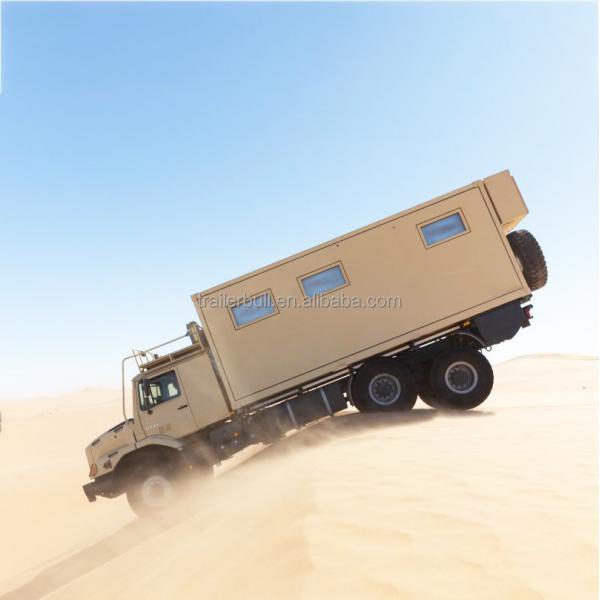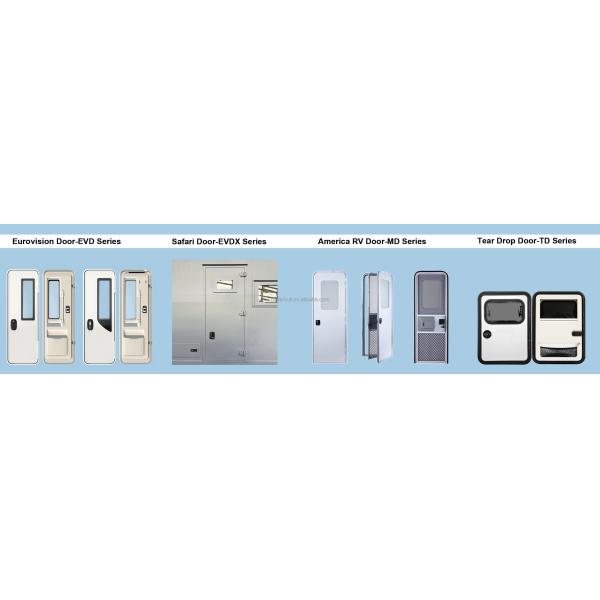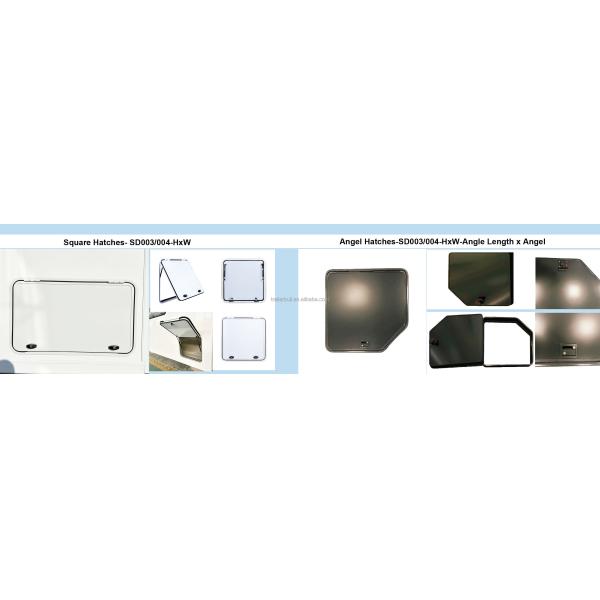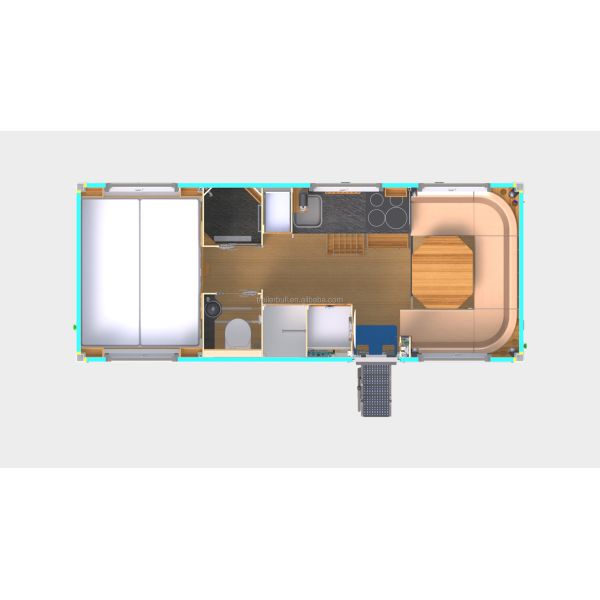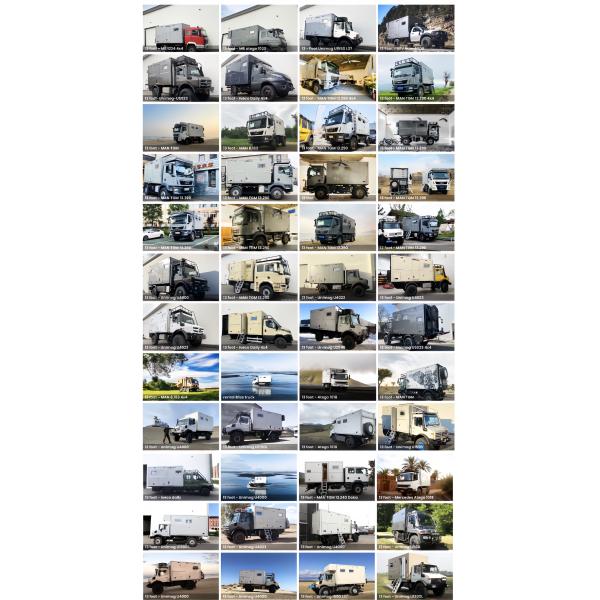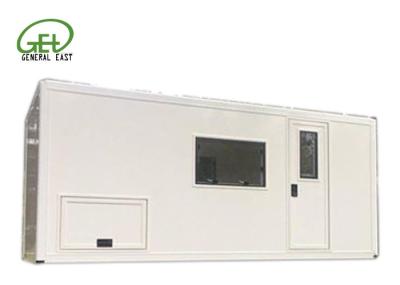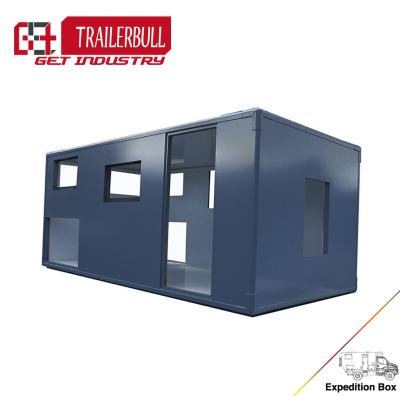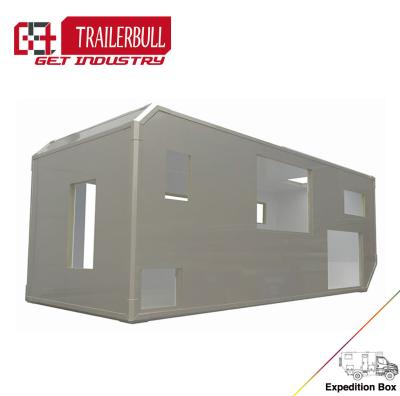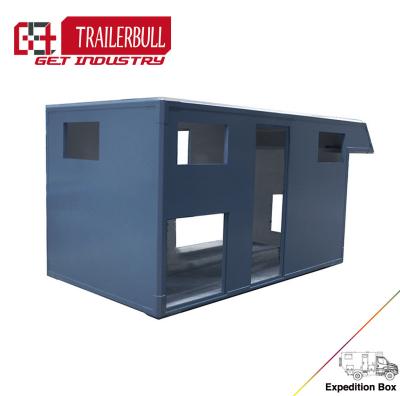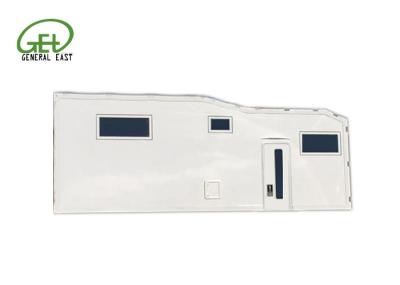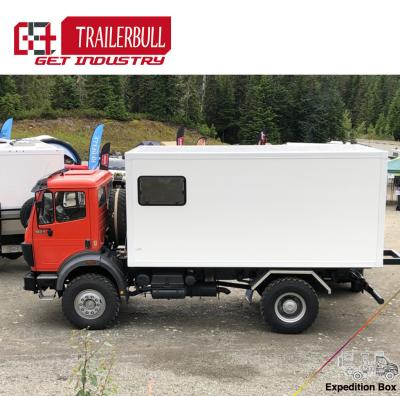Q '-What’s the material of your Truck Camper body?
A.- We can produce FRP (Fiberglass Reinforced Plastic), PPGI steel and Aluminum composite with XPS/PU insulation Sandwich panels for the truck camper box. The Core Material can be PU, XPS.
Q '- If want the price, what should offer us the information?
A.-You need offer us the material, size (LxWxH and the thickness of the panel) and quantity of the truck body as the basic
information. The sketch or the design drawing is much appreciated.
Q '-Can you pre-cut openings for windows and doors?
A.-We can offer this service with cost as we have embedded strengthen parts inside, but that will be confirmed before producing. your own Openings can easily be cut with a jigsaw and plastic rated blade, but the embedded strengthen parts cannot make. So if it will work in really bad expedition, you'd better let us pre-cut openings for windows and doors.
Q '-Can you do departure angles?
A.-Yes, we have two sizes of the box shape, one is the standard square shape, the other is the departure angle design. Please mark the desired angle (including dimensions) in the quoting template if you need.
Q '-Can you design subframes?
A.-We have the service of this, but you need supply the full chassis layout to us in advance.
Q '-Can I use different windows and doors than what’s listed on your specification?
A.-Yes. However, we highly recommend our windows and doors as they work in perfect balance with our camper bodies.
Q '-Can I order a camper body with an alcove?
A.-Yes. Please ask us for our alcove quoting template.
Q '–What’s included in the shipment?
A.-1. CKD type with All panels cut to size (other than departure angle), 2. CBU type with assembled box per your requirements.
Q '–Can you help with the interior layout?
A'–No. We are solely a camper body supplier, not a full-scale outfitter/design office.
Q'- How To Match a Camper to Your Truck
A.-Truck manufacturers provide consumers with certain ratings to help determine the capacities of the truck, as manufactured. Some of these ratings are posted on the driver's side door jam, on a label in the glove box, or in the owner's manual or other literature. If you already own a truck that you intend to use for a camper, it's always wise to take it to a commercial truck scale to determine the actual weight of the truck. That information along with your truck capacity information will help you determine the remaining capacities for carrying and/or towing.
Camper weights both dry and wet vary depending on what optional equipment you have installed and how full your holding tanks are. Also, take into consideration the weight of passengers, gear and trailer tongue weight (if applicable).
Q'- What is Truck Weight Capacity Ratings
A.-(Usually Found on the Driver Door Jam) The value set by the truck manufacturer as the loaded weight of the vehicle plus the loaded weight of any trailer it tows.
The GVWR, GAWR for the front axle and GAWR for the rear axle are generally posted by the manufacturer on the truck door post or in the glove compartment.
The manufacturer determines the GVWR, GAWR and CGVWR at the time of manufacture and manufacturers are unwilling to change this number once the vehicle is built to a dealer or sold even if modifications have been made to the truck.
Q'- What is GVWR (Gross Vehicle Weight Rating)
A.-The value set by the truck manufacturer as the loaded weight of a single vehicle.
Q'- What is GAWR (Gross Axle Weight Rating)
A.- The value set by the truck manufacturer as the load-carrying capacity of a single axle system. There is a separate (and different) GAWR for the front and rear axles
Q'- What is CGVWR (Combined Gross Vehicle Weight Rating)
A.The value set by the truck manufacturer as the loaded weight of the vehicle plus the loaded weight of any trailer it tows.
The GVWR, GAWR for the front axle and GAWR for the rear axle are generally posted by the manufacturer on the truck door post or in the glove compartment.
The manufacturer determines the GVWR, GAWR and CGVWR at the time of manufacture and manufacturers are unwilling to change this number once the vehicle is built to a dealer or sold even if modifications have been made to the truck.
Q'- How to Determine Your Load Carrying Capacity
A.The first step is to determine the load carrying capacity of your truck by taking the truck to any commercial weight station and obtain weights for the total truck and the weight on each axle. At the time of weighing, the fuel tanks should be filled and the driver and expected normal number of passengers should be in the truck cab. The total weight of the truck subtracted from the truck's GVWR will be the cargo weight the truck can carry.
To determine the approximate weight of a camper, add the weight of all optional equipment (both factory- and dealer-installed) to the camper wet weight that’s posted next to the camper's entry door. Also add the weight of supplies, personal gear and other cargo that might be carried in the camper or truck. You can also use the Get RV Quote link to get an approximate weight of the model of your choice with options.



